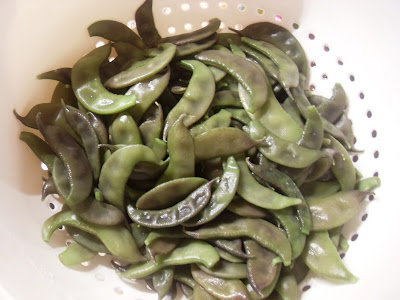A few years back a gentleman at the Tucson Organic Gardeners (TOG) was offering free Jerusalem Artichoke Tubers out of a bucket. He was touting how good they were to be eaten raw. Though I reluctantly listened to his presentation and thought the crop looked interesting, I decided not to take any tubers because I had no idea how perfect this vegetable would turn out to be for my garden. My experience at TOG turned to regret when I learned from the book Perennial Vegetables how great this vegetable would be in my garden.
Though Americans call the roots of this sunflower a “Jerusalem Artichoke” a more appropriate name would probably be “Suntuber”, hence the nickname “Sunchoke”. As a native to the United States, the Jerusalem Artichoke grows throughout the country. However, based on my own experience, some varieties may do better in specific climates then others.
The seed root that resulted in my recent Jerusalem Artichoke crop came from Sonoma County. A farm there was selling two different varieties: one red and the other, white. I brought home a small paper bag of each variety and promptly planted them in January of 2011. That summer I planted some Chinese long beans in the same area as the Jerusalem Artichoke and the long beans crowded everything out. Though the red tubers perished, a few of the white rooted varieties managed to grow a little, despite the minimal sunlight. This last spring was the first time that I noticed a Jerusalem Artichoke flower stalk growing with vigor. It grew relatively well early in the summer then died back – partially due to lace bugs – in August. I was expecting the plant to “take over the garden” as I had read others report – but with this being Arizona – perhaps I was expecting too much.
 |
| Jerusalem Artichokes (Sunchokes) |
The plant itself was much more “bushy” than I had initially expected. Compared with other sunflowers it has a large footprint. My plant, which was covered with rough leaves and small yellow flowers, reached to the height of 5-6 feet and a width of at least 4 feet in diameter.
Before cooking the tubers of the Jerusalem Artichoke I read up a little. Based on their shape, I knew that the roots were a pain to peel – so I decided to pick a recipe that required no peeling. Another bit of helpful information I gleaned from my online and book reading was the warning that many people gave concerning the root – which gives it the nickname of “Fartichoke”. It seems that people cannot digest the carbohydrate “inulin” which is found in the tubers. Apparently, this lack of digestibility can lead to those who eat the roots to stomach cramps and gaseous tendencies.
Before cooking the tubers of the Jerusalem Artichoke I read up a little. Based on their shape, I knew that the roots were a pain to peel – so I decided to pick a recipe that required no peeling. Another bit of helpful information I gleaned from my online and book reading was the warning that many people gave concerning the root – which gives it the nickname of “Fartichoke”. It seems that people cannot digest the carbohydrate “inulin” which is found in the tubers. Apparently, this lack of digestibility can lead to those who eat the roots to stomach cramps and gaseous tendencies.
The recipe I used (minus the brandy) was a Cream of Jerusalem Artichoke soup from Allrecipies.com. So here are the results of this recipe: Adults love it – kids were okay with it. The main problem my children had with the soup was the texture. The tubers were harder than all the other ingredients by the end of the cooking process, which translated into how the recipe turned out. Perhaps I would suggest that the tubers be provided several minutes of cooking in the oil before adding the onion and potatoes. Though my children didn’t care for the soup, the very next night I was able to cunningly substitute the Cream of Jerusalem Artichoke soup for a white sauce required as an ingredient for a casserole. Good thing my kids don’t read my blog – yet!
So the soup turned out to be a success. I noticed very little problems with gas, which I can only ascribe to either cooking it with potatoes or to my substantial raw vegetable consumption. The main affect I noticed from eating Jerusalem Artichokes was improved digestion – which is a very positive effect given that my difficulty digesting meat has lead me to become almost completely vegetarian.
So my overall rating for this vegetable is good. I’ll keep it in my garden as a perennial and add it to my potato-based recipes. Perhaps I’ll even try to obtain other Jerusalem Artichoke Cultivars.
If you would like to know more about rearing Jerusalem Artichokes, Southern Exposure Seed Exchange (SESE) has a good planting guide. In addition, both Wikipedia and Mother Earth News have some nice articles about the Jerusalem Artichoke.
Even with many different varieties of Jerusalem Artichoke available, very few websites sell more than one variety or even know what variety they sell. Despite this, I have discovered two websites that provide multiple Sunchokes varieties. The first offers two varieties at Fedco Seeds Moose Tubers and the second site offers various varieties online at Oikos Tree Crops.com.






















